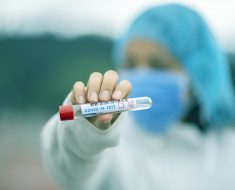Practitioners of dry needling attempt to release tension from knots and pressure points in muscles. Acupuncturists insert needles to release endorphins and affect the nervous system. Traditionally, acupuncture was used to align a person’s energy, or chi.
While researchers have studied acupuncture as a complementary treatment for many conditions, dry needling is a newer practice, and the evidence is less comprehensive. Also, strict guidelines are in place for acupuncturists, but dry needling is not regulated.
In this article, learn more about the differences between these practices and what their benefits may be.
Dry needling vs. acupuncture

These practices share some similarities, and both claim to provide therapeutic relief from pain. However, they involve different methods and should not be confused.
People have used acupuncture for centuries, and it is now well regulated. Dry needling has been developed more recently, and there are no official guidelines.
Acupuncture can be used for a variety of medical conditions. The primary philosophy is that a body can be healed when chi, or healing energy, is released.
Dry needling is designed to relieve tightness and pain in muscles. Practitioners believe that inserting a needle directly into a knot or pressure point will release tension in the surrounding muscle.

Acupuncture is an ancient technique developed in China.
Proponents claim that it can relieve stress, pain, and discomfort by opening up a person’s energy flow, or chi.
Medical acupuncture involves using long, thin needles to stimulate nerves in the muscles and under the skin.
This can result in the production of endorphins, which may relieve some symptoms.
Acupuncture is used to alleviate a wide range of symptoms, commonly including:
- aches and pains in muscles
- nausea
- menstrual cramping
- headaches and migraines
- depression
- labor-related pain
- vomiting
- knee pain
To practice acupuncture, a person needs to be licensed and undergo extensive training. A master acupuncture therapist will undergo 3 or more years of training. They will learn to identify symptoms, diagnose conditions, and use correct techniques with needles.
A senior member of a national board will supervise new practitioners. Before receiving a license, a new practitioner must pass examinations from the national board, and they must continue to pass examinations each year after receiving a license.
A wide body of research supports the use of acupuncture to treat many medical conditions, including migraines, depression, and arthritis.
A 2017 study found that regular acupuncture could help to prevent migraines, and a review from 2012 indicated that acupuncture may treat migraines as effectively as other medical options.
More research is needed to determine whether acupuncture can help to treat arthritis, but some people find that it can reduce associated pain.
Results of a 2018 review show that acupuncture may reduce the severity of depression in some people when used alongside traditional treatments.
Anyone interesting in trying acupuncture should speak with a doctor about finding a registered practitioner.

Dry needling is usually considered safe if the practitioner uses sterile needles. Otherwise, a person is at risk of contracting blood-borne pathogens.
Further risks associated with dry needling are mild and relatively common. They include:
- temporary soreness at insertion sites
- bleeding at the sites
- bruising at or around the sites
People who receive acupuncture rarely experience side effects. When they occur, they often include bleeding, bruising, and mild pain.
Takeaway
Both dry needling and acupuncture may help to relieve muscle aches, pains, and tightness.
Acupuncture is a well-regulated procedure. Needles are inserted at strategic points to stimulate the flow of energy throughout the body. While some evidence is inconclusive, acupuncture is widely recognized as helpful in treating certain ailments.
Dry needling was developed much more recently. With no formal regulations in place, a person has a much higher risk of experiencing side effects. There has been little research, but some people find that this practice reduces pain.
Before trying dry needling or acupuncture, consult a doctor and research available practitioners.
Source: Read Full Article




